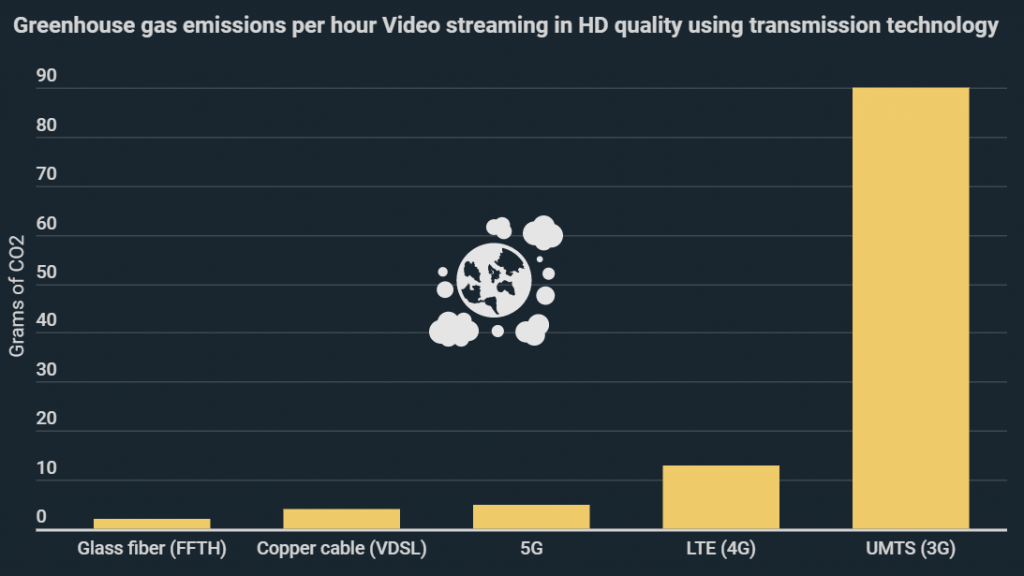14.6 million Germans had subscriptions to the Amazon Prime Video streaming service last year. Netflix, by contrast, had 10.9 million subscribers, as shown in a new infographic from Kryptoszene.de. The industry as a whole is on the upswing, yet progress is required in terms of infrastructure if its ecological footprint is to be reduced.
After Amazon and Netflix, Disney+ and Apple TV+ rank third and fourth place respectively. It is worth noting, however, that these companies do not report user figures for the German market separately; statistics are based on data from the London-based analysis firm Ampere Analysis.
As the infographic shows, 27% of German citizens have been using streaming services more frequently since the outbreak of the pandemic. Conversely, just 6% of those who use streaming services have been doing so less frequently. In total, 44% of Germans have a film or streaming subscription, according to data from a „YouGov“ survey.
The amount of greenhouse gases emitted per hour of video streaming depends largely on the technology used to transmit that data to users. In the case of transmission via fibre optics, just 2 grams of CO2 are emitted per hour of video streamed. In Germany, however, the expansion of fibre optics has been relatively slow and does not stand up in international comparisons. With transmission via copper cables, the figure amounts to 4 grams per hour streamed. The figures are much worse for LTE (13 grams) and UMTS (90 grams).
A look at the stock exchange floor underlines just how much streaming providers have profited from the developments of the last year. Netflix has increased its market capitalisation by around 38.4% in the last 12 months. Competitors have also achieved comparable growth. The rise in Roku’s market capitalisation has been notably strong, increasing by 278%.
Folgen Sie uns auf Google News









